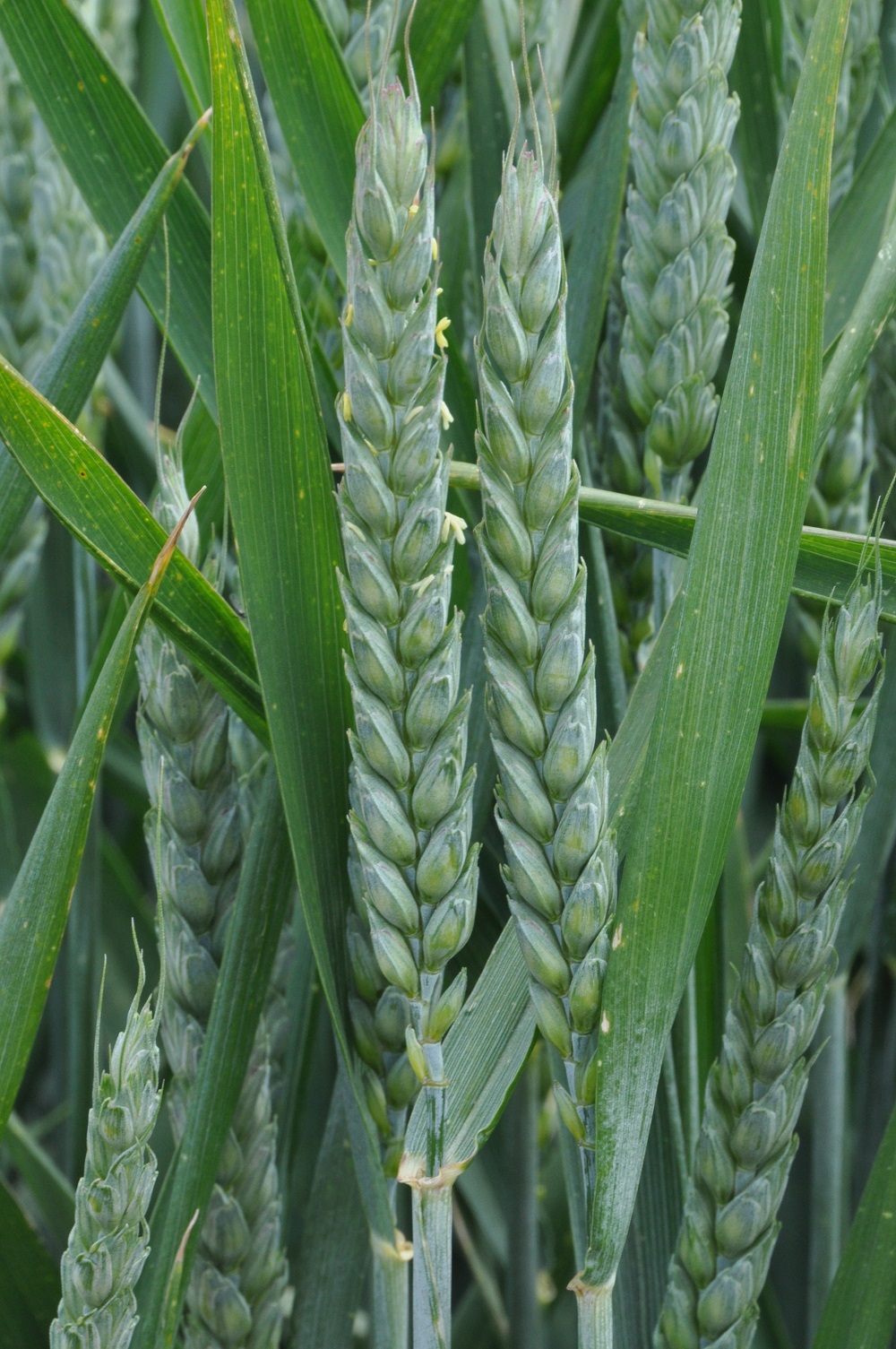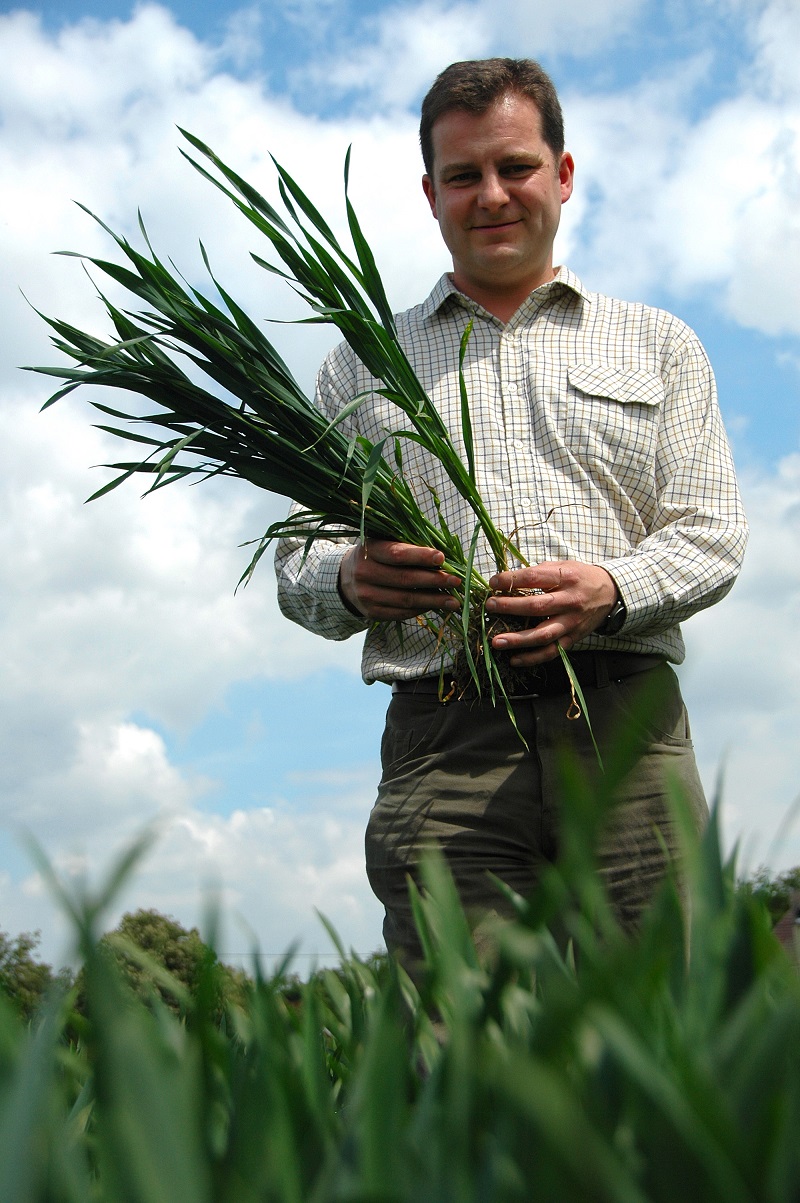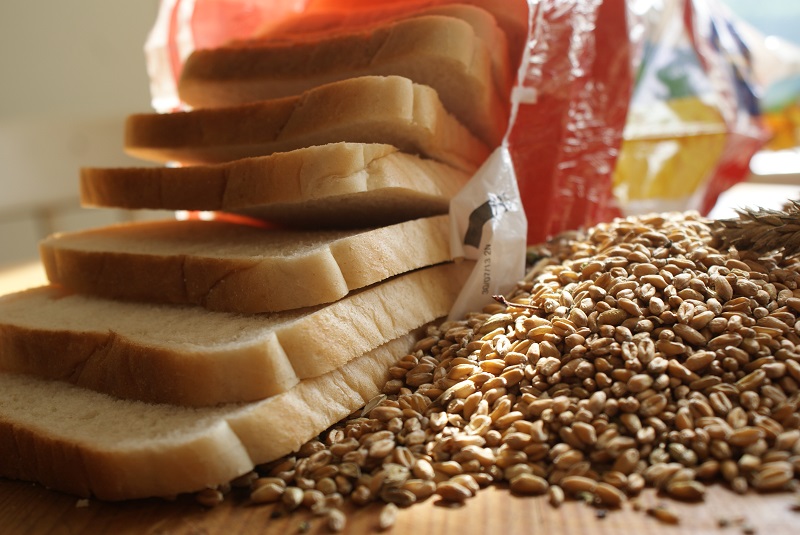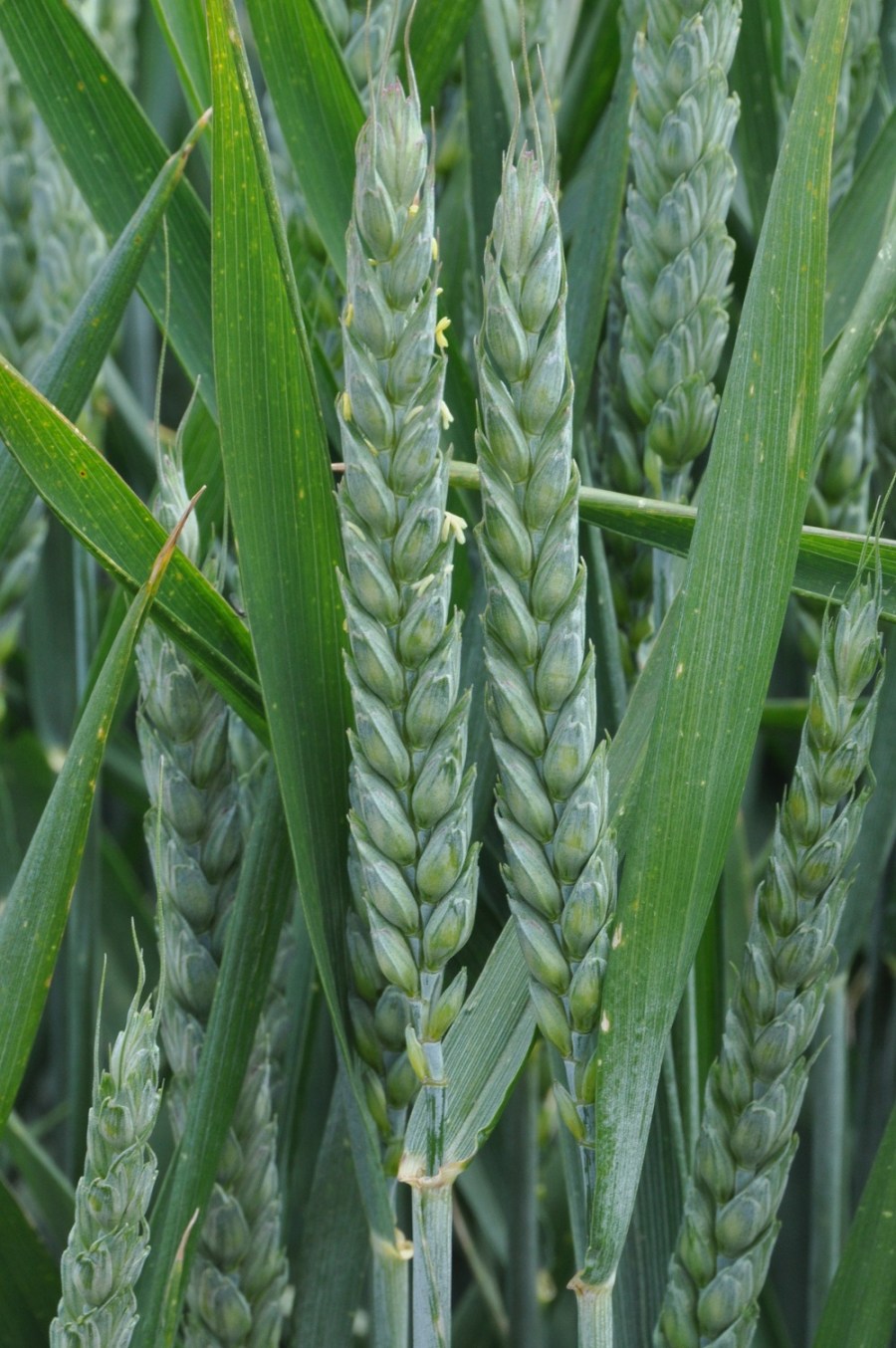 Versatility is one of the key selling points of KWS Siskin, with its ability to suit the requirements of the grower,
Versatility is one of the key selling points of KWS Siskin, with its ability to suit the requirements of the grower,
whether that’s as a milling or a feed wheat. CPM reviews its potential.
By Melanie Jenkins
KWS Siskin caused quite a stir earlier this year, when it became the first ever wheat to be upgraded by nabim from a Group 4 to a Group 2 wheat following a challenge by the breeder. However, despite the controversy, there are many reasons to recommend this variety to a range of different growers.
Not least of these is one of the highest yields on the AHDB Cereals and Oilseeds Recommended List at 105% of control. KWS Siskin also offers good disease resistance, with the RL’s highest disease rating against septoria.
It’s all about the 7 for Septoria tritici – it has the highest resistance available on the RL.
It’s a cross between KWS Stirling – itself a high yielding Group 2 variety – and Timaru, which was a clean high
yielder that didn’t make recommendation in the UK but did in Denmark. KWS Siskin therefore has a yield that puts it among the best of the feed varieties, according to Mark Dodds, wheat breeder at KWS. “Its yield and septoria resistance make it very attractive to feed or quality growers.”
Baking tests on Siskin since its first year in National List trials had rated it as a potential bread-making wheat. But itwas then rated on the RL as a Group 4, which came as something of a surprise, says Mark Dodds. “When we saw the data after the release of the RL, we decided to appeal the decision – we felt there was undue weight put on a

Its yield and septoria resistance make KWS Siskin very attractive to feed or quality growers, reckons Mark Dodds.
particular data set. Nabim agreed, so reviewed the milling and baking test data, including performance data from a range of new trial sites.” This was the first appeal put forward on the categorising of a variety and was successful, which moved KWS Siskin to a Group 2.
According to Julie Goult at KWS, tests from millers and independent testing centres have shown inconsistencies in KWS Siskin but it still qualifies as a Group 2. “Nabim was very supportive and helpful throughout the appeal process and addressed it positively,” she says. “In general, KWS Siskin has been received well by the merchant trade, getting a positive response since the regrading.”
Nabim comments that over the three years of testing, the variety “showed a degree of variability in its baking performance and may be more suited to use in blends. Some yellowness may be seen in the flour colour,” it added. But again, these results are consistent with a Group 2 variety.
So how does KWS Siskin perform in the field? Characteristically, it’s quite an upright variety, with short to medium height and good tillering, says Mark Dodds. “Agronomically it’s an excellent all round package. It can be drilled from mid Sept onwards but has also done exceptionally well in later sowings. It’s done well across the regions and should be of interest in the south west of England because of its septoria resistance.”
The variety does well on both light and heavy land and as a first or second cereal, making it particularly impressive, says John Miles at KWS. “It’s not a variety that should be pigeon-holed. Once it gets going it’s fast to move.” KWS Siskin is best drilled from mid Sept and has done well in terms of vigour in trials for later sowing. “A lot of growers are delaying drilling for blackgrass, so Siskin can be ideal for sowing from mid to late Oct,” he adds.

Initially placed on the AHDB Recommended List as a Group 4 wheat, it became the first ever wheat to be upgraded by nabim to a Group 2.
It can be hard to get a good feel for a variety just from the RL, especially earliness to harvest, so John Miles recommends that growers go to early local field days this year. “The disease package is solid, with mildew and yellow rust scores of 9 and a brown rust score of 8,” he says. “But it’s all about the 7 for Septoria tritici – it has the highest resistance available on the RL.”
That’s not a reason to skimp on the fungicide programme, though, and instead he recommends spraying to complement its natural resilience. “When commodity prices are low, it can be tempting to use varietal disease resistance to save on inputs. You may be able to trim rates in a low pressure year but whatever the season, our trials show that there’s still a significant response in yield from treating resistant varieties. Resistance should be seen as more of an insurance policy for when spraying applications are unavoidably delayed.”
The eyespot resistance is currently a 4 on the RL, with limited data, but John Miles says that KWS Siskin wouldn’t be able to push out the yields it achieves if this were an issue.
Siskin moves into Group 2 beside two other varieties from the same breeder – KWS Lili, a very similar wheat, and Cordiale. At 294, Siskin sits between them on Hagberg and it’s a similar story on specific weight. Although a protein of 11.3% may look low, compared with a milling spec, other quality varieties, grown as feed wheats in the RL trials, perform at a similar level, points out John Miles.
“The variety should achieve the standard 12% protein target when grown for milling. But one issue to keep a watch on is the high yield potential. This will need to be addressed if the wheat is grown for a quality market. One suggestion is that it could be grown as a feed in year one of a rotation and then for milling in year two as it performs well as a second wheat,” he adds.
Drilling window
So with Siskin and Lili both looking very similar on the RL, how are they best positioned? “Lili’s better suited to earlier drilling and is shorter and stiffer. In contrast, Siskin has a drilling window that extends in to the late autumn and is earlier to mature. Otherwise there’s little to separate them,” says John Miles.
“If Siskin’s drilled slightly early then it might need more than the standard PGR programme, but drilled in its wide drilling window, a standard practice will suffice.”
KWS Siskin has been in small scale testing for the past three years but how the variety will actually perform in the miller’s grist won’t really be known until it’s on the market and commercially grown. Group 2 varieties are generally identified by either having variability or a special characteristic.
Cordiale is still the Group 2 variety of choice, according to Martin Savage at nabim, and though Panorama is no longer on the RL, some millers will still buy it. But Group 1 now has a strong field of competitors that could take a big chunk of the market.
“I like to think growers differentiate themselves into the groups,” he says. “Those growing Group 4 want yield to make the margin at low inputs, whereas Group 1 growers are more specialist and rely on premiums to cover extra inputs.” While any grower should have some idea of the potential market of their crop, there’s no easy solution, he adds as end users have plenty of choice. “Know your market. Group 2 varieties are either variable or have special characteristics, so growers should determine where they will have a market if they choose to grow them.”
Andrew Cooper, managing director at Walnes Seeds, says that trial results over the past few years look good and that the reaction from growers promises great market potential for the variety. “Some growers might be resistant to Group 2 due to the premium risks but with Siskin this risk is minimised, so this is exciting for growers.”
KWS Siskin is an improvement on current varieties in terms of yield, agronomics and grain quality, which is good for growers who are looking to reduce inputs. “Growers who are growing a Group 2, other than KWS Lili, will question why they’re growing them when they see Siskin,” says Andrew Cooper.
He adds that it’ll probably take a year of market availability for feed wheat growers to assess Siskin, meaning it might be difficult to gauge its market prospects in this first year. “It has the opportunity to take 10% or 11% of the market quite easily, depending on how this year goes.” However, Siskin will have to compete against established feed varieties such as Reflection and KWS Santiago.
Premium prospect
As a Group 2, the premium is possible but this will largely depend on how the milling industry views the variety and until this is established, it’s hard to know how well it will do, he continues. “The demand will come from growers who might not achieve the premium, but a lot will depend on contracts and the proximity to millers.”
Julius Deane, wheat director at Carr’s Flour Mills, says they’ve seen the variety for three consecutive years, testing a 5kg sample each year. Tests have shown that Siskin doesn’t quite have the same consistency in baking quality each time, placing it in Group 2 with milling potential. “It offers more uses than just for bread and may well have a place in the grist, but it’s unlikely to be used at 100% in top line flour,” he says.
“We haven’t seen it on a commercial scale and it hasn’t been trialled like Group 1s, so the jury’s still partly out,” adds Julius Deane. It has plenty of uses as a Group 2, but it will be two years before Carr’s see anything much of Siskin due to initial take-up. “It’ll be harvest 2017 before there are commercial volumes available.”
Great potential with Norfolk crop
Tony Pointer of WT Pointer and Son, Manor Farm, near Fakenham in North Norfolk, started growing KWS Siskin in 2014 as a seed crop. He grew 23ha across two fields, which went in behind oilseed rape and potatoes. Both fields were min-tilled; the spuds after subsoiling first. The crop was planted on 22 Sept 2014 and yielded an average of 10.45t/ha.
The seed was dressed in Kinto (triticonazole+ prochloraz) and was planted at a seed rate of 140kg/ha with a power harrow combination disc drill into a sandy loam soil. “It established well and came up very quickly,” he says. “Both fields were left in good order, the OSR having chicken muck applied before drilling, so the wheat went into very fertile ground.”
At the end of March 60kgN/ha plus 40kg/ha of SO3 were applied, then 100kgN/ha in the middle of May. Tony Pointer says there were no disease issues and surprisingly no fusarium, considering how wet the summer was. “It stood well to be combined, thrashed out well and produced a good sample.” One field of KWS Siskin was combined on 16 Aug 2015 before the rain started, while the second field wasn’t harvested until 1 Sept.

Tony Pointer is growing KWS Siskin again this year. He planted 30ha at a seed rate of 180kg/ha and finished drilling on 27 Oct 2015, which was exceptionally late as the poor weather delayed potato lifting.
Although it didn’t get off to the best start, the crop now looks remarkably well considering the wet and mild weather, he says. It now needs an early spring drought to allow better root growth. “It’s been very easy to grow and has great potential.”




